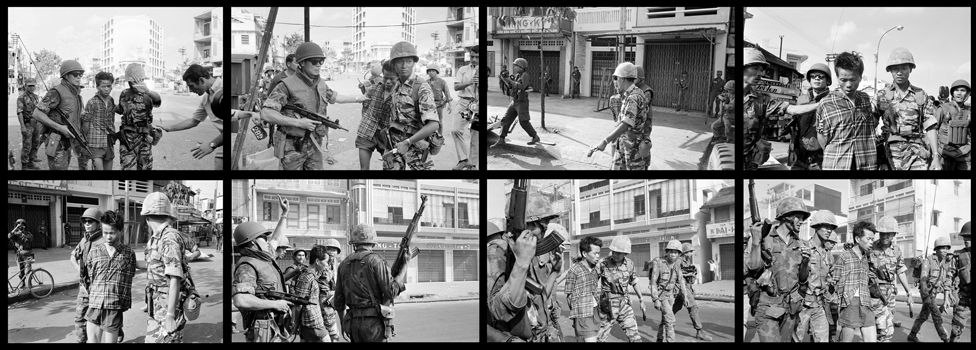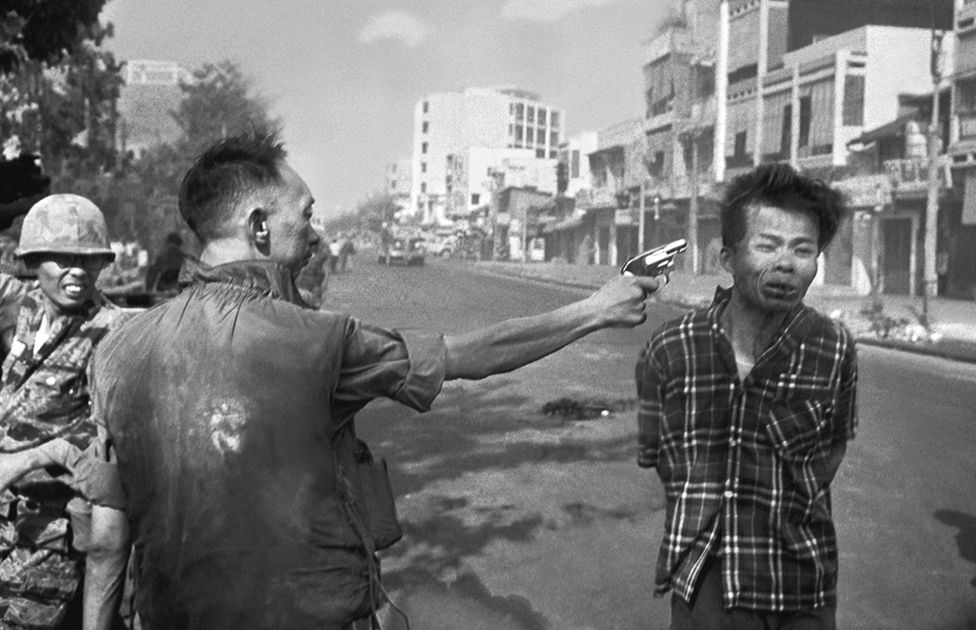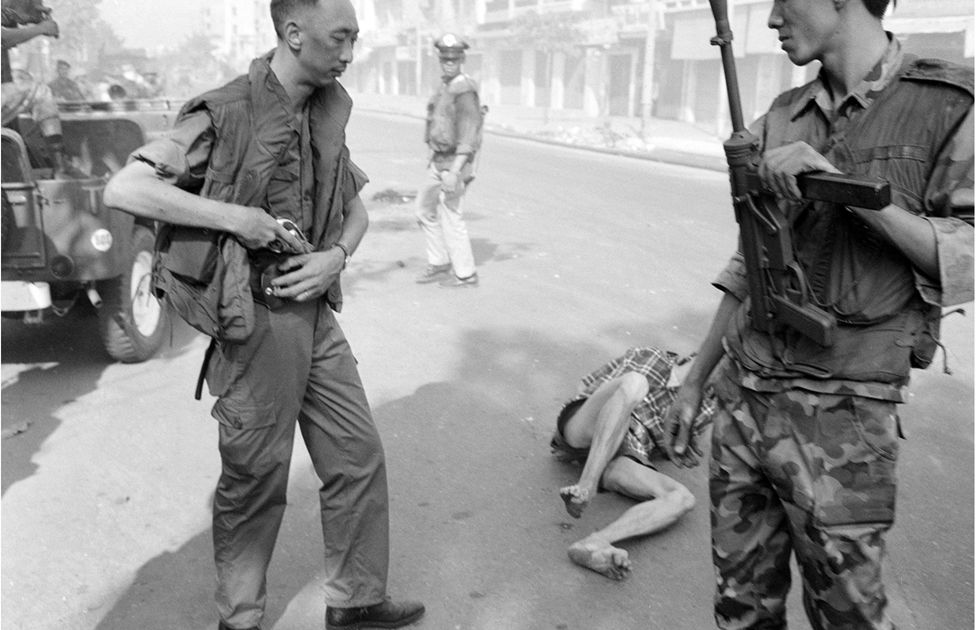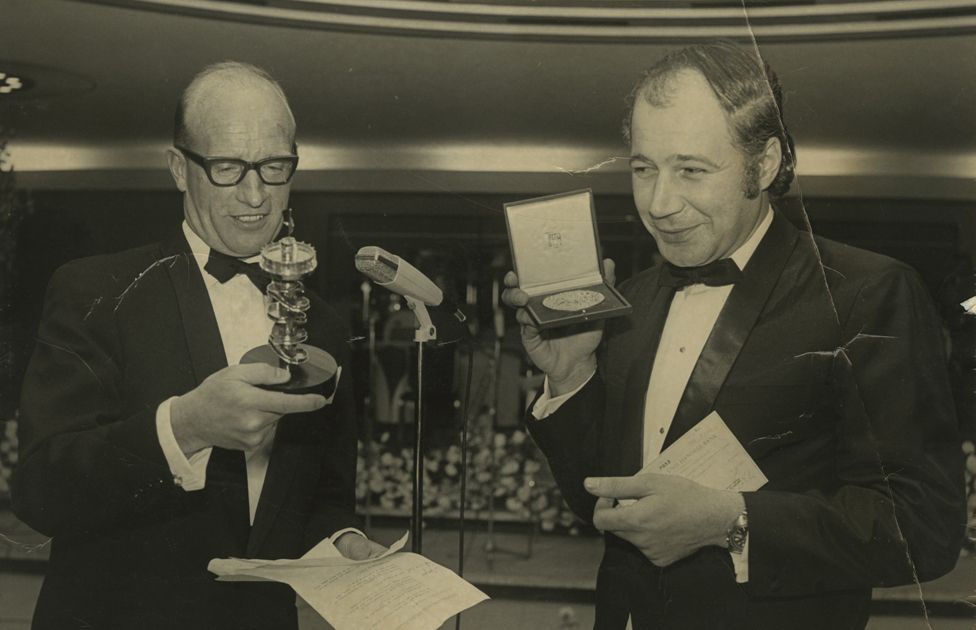- 29 January 2018

This blog contains lots of articles and world news. Its aim is to be a source of knowledge for people to read and think, and thus make an intuitive decision on how to lead their lives fruitfully in every-day livings.Under the concept of Today-Readers are Tomorrow Leaders.' The world will be better because we begin to change for the best.
วันพุธที่ 31 มกราคม พ.ศ. 2561
Wider World by CS: พระสมเด็จที่สวยงามสำหรับปี ๒๕๖๑
Wider World by CS: พระสมเด็จที่สวยงามสำหรับปี ๒๕๖๑: วันนี้วันที่ ๑ กุมภาพันธ์ ๒๕๖๑ ขออวดโฉมพระสมเด็จที่สวยงามให้ได้ชมอีกองค์หนึ่ง เพื่อให้ทุกคนที่สนใจเรื่องพระเครื่องได้ชื่นชมองค์พระสมเด็จที่...
พระสมเด็จที่สวยงามสำหรับปี ๒๕๖๑
วันนี้วันที่ ๑ กุมภาพันธ์ ๒๕๖๑ ขออวดโฉมพระสมเด็จที่สวยงามให้ได้ชมอีกองค์หนึ่ง
เพื่อให้ทุกคนที่สนใจเรื่องพระเครื่องได้ชื่นชมองค์พระสมเด็จที่ถือว่าสวยงาม
เมื่อนำมาเทียบกับองค์พระสมเด็จองค์ดังในวงการพระเครื่องที่ยาวนานนับเป็นสิบๆปี
เป็นพระพิมพ์เดียวกัน(วงแขน/การประสานมือ/ใบหน้า/เส้นซุ้ม/ฐานทั้งสามชั้น/การตัดขอบ)
สภาพเหมือนๆกันอันเนื่องมาจากการเวลา
องค์ที่นำมาแสดงเนื้อออกขาวนวลสวยงามมากๆ
ท่านชมแล้วลองให้คะแนนว่า
องค์ไหนสวยกว่า
ม. โชคชัย ทรงเสี่ยงไชย
เพื่อให้ทุกคนที่สนใจเรื่องพระเครื่องได้ชื่นชมองค์พระสมเด็จที่ถือว่าสวยงาม
เมื่อนำมาเทียบกับองค์พระสมเด็จองค์ดังในวงการพระเครื่องที่ยาวนานนับเป็นสิบๆปี
เป็นพระพิมพ์เดียวกัน(วงแขน/การประสานมือ/ใบหน้า/เส้นซุ้ม/ฐานทั้งสามชั้น/การตัดขอบ)
สภาพเหมือนๆกันอันเนื่องมาจากการเวลา
องค์ที่นำมาแสดงเนื้อออกขาวนวลสวยงามมากๆ
ท่านชมแล้วลองให้คะแนนว่า
องค์ไหนสวยกว่า
ม. โชคชัย ทรงเสี่ยงไชย
วันอังคารที่ 30 มกราคม พ.ศ. 2561
Enjoy the street food of Bangkok in wintry Delhi
The vibrant streets of Bangkok are being recreated at the Leela Ambience Convention Hotel in Delhi. Go treat your taste buds now!
IANS | New Delhi | January 28, 2018 5:20 pm

Photo: Istock
Want to try some morning-glory stir fried with yellow bean sauce, garlic and chillies? Or maybe deep-fried white snapper with cashew nuts and dry chilli? Or perhaps some refreshing steamed sea bass fillet in lime, garlic and kaffir lime sauce?
“Streets of Bangkok”, a gourmet Thai food festival organised by The Leela Ambience Convention Hotel here and running till the end of this month, offers all these and more.
Priced at only Rs 1,199 per person, the festival offers you a chance to taste the creations of Parihar Veer Pratap Singh, chef de cuisine of Mei Kun restaurant in the hotel, and Thai master chef Kanyaphat Faisai.
Associated with one of the hotel’s sister properties, Kanyaphat is assisting Singh to bring alive the magic of the mouth-watering delicacies during the festival, recreating the authentic flavours transported all the way from Thailand.
The vibrant streets of Bangkok are being recreated at the hotel’s outdoor patio, Frangipani.
Thai cooking emphasises on lightly prepared dishes with strong aromatic components and a spicy edge.
So, when you are looking for appetisers, as a vegetarian you can choose from Som Tom (raw papaya salad), Yum Som (spicy pomelo salad), Poh Pia Jae (vegetable and glass noodle spring roll) and Yum Hed Ruam Phak (mixed mushrom salad with vegetables).
Non-vegetarians can choose from chicken satay with peanut sauce, Kra Thong Thong (golden flower cup served with chicken mince), and Yum Woon Sen (Thai seafood glass noddle salad). Note the word “yum” in the last dish. It is, actually!
And if you thought Tom Yum Goong is a martial arts flick starring Tony Jaa, think again. It is actually a prawns and lemongrass soup that will delight your culinary senses.
Other soups on offer include Tom Kha Phak (soup with straw mushroom, galangal and coconut milk), Kaeng Chuet (a light vegetable broth with vegetables and celery, soft tofu and seaweed) and Gaeng Jued Thao Hoo (clear glass noodle soup with vegetables).
That seafood plays an important role in Thai cuisine is re-emphasised in the main course where you come across dishes like Pla Lard Prik (deep-fried white snapper with sweet chilli sauce), Chu Chee Kung (deep-fried tiger prawn topped with red curry, homemade sauce and kaffir lime leaf) and Pla Neung Manao (refreshing stamed sea bass fillet in lime, garlic and kaffir lime sauce).
Vegetarians can choose the main course from the likes of Phad Prik Tauhu (stir fried silken tofu, bamboo shoots and bird chillies), Kaeng Phet Phak (red curry mixed vegetables and sweet basil) and Phad Phak Ruam Mitr (wok fried vegetables with soya garlic sauce) among others.
If you want to kill the winter chill with chicken, you can take your pick from Gai Phad Med Ma-mung Himmapan (stir fried chicken with cashew nuts and dry chilli), Kaphrao Gai (stir fried chicken with basil and chillies), Gaeng Kiew Wan Gai (green curry with chicken) and more.
You can enjoy your main course with Mee Hoon Phad Gai (stir fried vermicelli with chicken and vegetables), Khao Phad Kraprow Phak (fried rice and spicy basil leaves with vegetables) or Khao Suay (steamed rice jasmine) among others.
Sounds exotic? Wait. Here come the desserts: Thap Thim Krop (water chestnut in syrup and coconut milk), Khao Niew Sang Kaya (sticky rice with Thai custard), Tao Suan (Thai moong bean pudding) and Kluai Thot (crispy banana with coconut ice cream), to name a few.
“Nowadays, there is a trend that street food is getting into hotels,” Thai Ambassador to India Chutintorn Gongsakdi, who inaugurated the festival, told IANS.
“Food or culture is the most solid foundation for other engagements, political and economic,” Chutintorn said, striking a philosophical note.
“So, if we have a good, strong cultural connection, that makes the other parts easier. And food is one of the ways.”
Stating that people long for things that they are used to like street food, Chutintorn said: “So, this is not only a perfect marriage of progress but also of bringing our heritage, our way of life into a modern and progressive setting in a hotel like this. So, you can sit in a nice hotel and you can still eat street food, which is our way of life in our culture.”
If you like the Thai exotic, you should surely head for The Leela Ambience Convention Hotel in east Delhi
Eddie Adams' iconic Vietnam War photo: what happened next
 Image copyrightAP/BRISCOE CENTER FOR AMERICAN HISTORY
Image copyrightAP/BRISCOE CENTER FOR AMERICAN HISTORY
Photojournalist Eddie Adams captured one of the most famous images of the Vietnam War - the very instant of an execution during the chaos of the Tet Offensive. It would bring him a lifetime of glory, but as James Jeffrey writes, also of sorrow.
Warning: This story includes Adams' photo of the moment of the shooting, and graphic descriptions of it.
The snub-nosed pistol is already recoiling in the man's outstretched arm as the prisoner's face contorts from the force of a bullet entering his skull.
To the left of the frame, a watching soldier seems to be grimacing in shock.
It's hard to not feel the same repulsion, and guilt, with the knowledge one is looking at the precise moment of death.
Ballistic experts say the picture - which became known as Saigon Execution - shows the microsecond the bullet entered the man's head.
Eddie Adams's photo of Brigadier General Nguyen Ngoc Loan shooting a Viet Cong prisoner is considered one of the most influential images of the Vietnam War.
At the time, the image was reprinted around the world and came to symbolise for many the brutality and anarchy of the war.
It also galvanised growing sentiment in America about the futility of the fight - that the war was unwinnable.
 Image copyrightAP/BRISCOE CENTER FOR AMERICAN HISTORY
Image copyrightAP/BRISCOE CENTER FOR AMERICAN HISTORY
"There's something in the nature of a still image that deeply affects the viewer and stays with them," says Ben Wright, associate director for communications at the Dolph Briscoe Center for American History.
The centre, based at the University of Texas at Austin, houses Adams's archive of photos, documents and correspondence.
"The film footage of the shooting, while ghastly, doesn't evoke the same feelings of urgency and stark tragedy."
But the photo did not - could not - fully explain the circumstances on the streets of Saigon on 1 February 1968, two days after the forces of the People's Army of Vietnam and the Viet Cong launched the Tet Offensive. Dozens of South Vietnamese cities were caught by surprise.
Heavy street fighting had pitched Saigon into chaos when South Vietnamese military caught a suspected Viet Cong squad leader, Nguyen Van Lem, at the site of a mass grave of more than 30 civilians.
Adams began taking photos as Lem was frogmarched through the streets to Loan's jeep.
Loan stood beside Lem before pointing his pistol at the prisoner's head.
"I thought he was going to threaten or terrorise the guy," Adams recalled afterwards, "so I just naturally raised my camera and took the picture."
Lem was believed to have murdered the wife and six children of one of Loan's colleagues. The general fired his pistol.
"If you hesitate, if you didn't do your duty, the men won't follow you," the general said about the suddenness of his actions.
 Image copyrightAP/BRISCOE CENTER FOR AMERICAN HISTORY
Image copyrightAP/BRISCOE CENTER FOR AMERICAN HISTORY
Loan played a crucial role during the first 72 hours of the Tet Offensive, galvanising troops to prevent the fall of Saigon, according to Colonel Tullius Acampora, who worked for two years as the US Army's liaison officer to Loan.
Adams said his immediate impression was that Loan was a "cold, callous killer". But after travelling with him around the country he revised his assessment.
"He is a product of modern Vietnam and his time," Adams said in a dispatch from Vietnam.
By May the following year, the photo had won Adams a Pulitzer Prize for spot news photography.
But despite this crowning journalistic achievement and letters of congratulation from fellow Pulitzer winners, President Richard Nixon and even school children across America, the photo would come to haunt Adams.
"I was getting money for showing one man killing another," Adams said at a later awards ceremony. "Two lives were destroyed, and I was getting paid for it. I was a hero."
 Image copyrightBRISCOE CENTER FOR AMERICAN HISTORY
Image copyrightBRISCOE CENTER FOR AMERICAN HISTORY
Adams and Loan stayed in touch, even becoming friends after the general fled South Vietnam at the end of the war for the United States.
But upon Loan's arrival, US Immigration and Nationalization Services wanted to deport him, a move influenced by the photo. They approached Adams to testify against Loan, but Adams instead testified in his favour.
Adams even appeared on television to explain the circumstances of the photograph.
Congress eventually lifted the deportation and Loan was allowed to stay, opening a restaurant in a Washington, DC suburb serving hamburgers, pizza and Vietnamese dishes.
An old Washington Post newspaper article photo shows an older smiling Loan sitting at the restaurant counter.
But he was eventually forced into retirement when publicity about his past soured business. Adams recalled that on his last visit to the restaurant he found abusive graffiti about Loan scrawled in the toilet.
- My father fought the CIA's secret war in Laos
- Mystery real-life Rosie the Riveter dies
- Vietnam War 'central' to modern America
Hal Buell, Adams' photo editor at the AP, says Saigon Execution still holds sway 50 years later because the photo, "in one frame, symbolises the full war's brutality".
"Like all icons, it summarises what has gone before, captures a current moment and, if we are smart enough, tells us something about the future brutality all wars promise."
And Buell says the experience taught Adams about the limits of a single photograph telling a whole story.
"Eddie is quoted as saying that photography is a powerful weapon," Buell says. "Photography by its nature is selective. It isolates a single moment, divorcing that moment from the moments before and after that possibly lead to adjusted meaning."
Adams went on to an expansive photography career, winning more than 500 photojournalism awards and photographing high-profile figures including Ronald Reagan, Fidel Castro and Malcolm X.
But despite all he achieved after Vietnam, the moment of his most famous photograph would always remain with Adams.
"Two people died in that photograph," Adams wrote following Loan's death from cancer in 1998. "The general killed the Viet Cong; I killed the general with my camera."
.
วันพฤหัสบดีที่ 25 มกราคม พ.ศ. 2561
Mosquitoes may learn to avoid humans swatting them: study
Source: Xinhua| 2018-01-26 03:28:47|Editor: Chengcheng
Xinhua file photo
WASHINGTON, Jan. 25 (Xinhua) -- Your grandmother's insistence that you receive more mosquito bites because you're "sweeter" may not be that far-fetched after all.
Researchers reporting in the U.S. journal Current Biology on Thursday showed that mosquitoes can in fact learn to associate a particular odor with an unpleasant sensation.
As a result, they'll avoid that scent the next time.
In other words, those who swat at mosquitoes or perform other defensive behaviors may be abandoned, no matter how sweet.
"Once mosquitoes learned odors in an aversive manner, those odors caused aversive responses on the same order as responses to DEET, which is one of the most effective mosquito repellents," Jeffrey Riffell at the University of Washington in Seattle said in a statement.
"Moreover, mosquitoes remember the trained odors for days," Riffell said.
It had been clear that mosquitoes show obvious preferences for some people over others, and the new study wanted to find out more about how learning might influence mosquitoes' biting preferences.
As a first step, they trained mosquitoes by pairing the odor of a particular person or animal species such as a rat and a chicken, with unpleasant mechanical shocks and vibrations.
Twenty-four hours later, the same mosquitoes were assessed in a Y-maze olfactometer in which they had to fly upwind and choose between the once-preferred human body odor and a control odor.
The mosquitoes avoided the human body odor, suggesting that they had been successfully trained.
Furthermore, the scientists were also able to identify that dopamine is a key mediator of aversive learning in mosquitoes.
Genetically modified mosquitoes lacking dopamine receptors lost the ability to learn.
The findings may have important implications for mosquito control and the transmission of mosquito-borne diseases, according to the researchers.
"By understanding how mosquitoes are making decisions on whom to bite, and how learning influences those behaviors, we can better understand the genes and neuronal bases of the behaviors," Riffell said. "This could lead to more effective tools for mosquito control."
วันอังคารที่ 16 มกราคม พ.ศ. 2561
Why Is Papua New Guinea Still Hunting Witches?
By Ian Lloyd Neubauer
January 17, 2018
Editor’s note: the following story contains images and content that may be disturbing to some readers.
In most parts of the world, stories about witch-hunts are confined to documentaries and mini-series. But in the Southeast Asian nation of Papua New Guinea, real-life witch-hunts that end in torture or murder are so commonplace they rarely make the evening news. Most also go uninvestigated by police. This comes despite the introduction of the death penalty for witch-hunting in 2013, after Kepari Leniata, a 20-year-old woman accused of using witchcraft to kill a neighbor’s boy, was burnt alive on a busy street corner as hundreds of people looked on.
But late last year, when news broke that a six-year-old girl accused of sorcery had been tortured by a group of men and only narrowly escaped with her life following a daring rescue mission by lay-missionary Andrew Lutz from Iowa, the story made headlines not only in PNG but across the world.
Enjoying this article? Click here to subscribe for full access. Just $5 a month.
The drama began when a man fell ill at a remote village in Enga Province in the highlands of PNG. It could have been HIV/AIDS or just an upset stomach. But his sickness was diagnosed as kaikai lewa (to eat the heart), where a witch uses black magic to secretly remove and eat the victim’s heart to gain their virility. As the daughter of a woman who’d been accused of the same crime, the six-year-old girl was fingered the prime suspect. So a group of villagers took her, stripped her naked, and tortured her for days, using hot knives to remove the skin from her back and buttocks.
By the time Lutz arrived at the village, the man whose illness had sparked the witch-hunt had staged a miraculous recovery. The perpetrators read this to mean their gruesome work had worked and incentivized the little witch to return his heart. There was no need to torture her any further – now. “After a couple of hours talking to the community, I was able to get her released into my care and took her to a hospital,” Lutz told me when I visited PNG in December.

The scars left on the abducted six-year-old.
And there the story would have ended – just another of the 1,000-odd violent witch-hunts that according to Oxfam take place in the country every year. But when the New Guinea Tribal Foundation, a charity that helped Lutz plan and execute the rescue, published a photo of the six-year-old girl’s disfigured back on Facebook – and concurrently revealed she was Kepari Leniata’s daughter – the story went viral. Prime Minister Peter O’Neill warned the perpetrators they had a committed a capital offense, while Police Minister Jelta Wong announcing the formation of a special task force. “We’re going after these people,” she said.
The horrific injustices unleashed upon the Leniata women also sparked deep soul-searching across the nation. PNG has developed rapidly in recent years, with roads, mobile phones, and the internet now connecting hundreds of once-isolated communities with the rest of the country and the 21st century. So why do the majority of Papuans still believe in sorcery? And what can be done to once and all put an end to this utterly despicable and form of social terrorism?
To understand why belief in something as ridiculous as sorcery remains a quotidian fact of life across all geographic and socio-economic divides in PNG, one must first understand the nation’s contemporary history. In the late 1800s, the conglomeration of more than 800 perpetually warring and cannibalistic tribes was thrust unprepared by German colonialists into the modern age, while highland regions like Enga remained undiscovered well into the late 1930s. Constructs like animism, ancestor worship, and sorcery, which have been used to make sense of the world since time immemorial, have not been easy to cast aside – even among PNG’s most educated people.
“A few years ago, I was in bed with my wife when my legs started vibrating violently,” says Joseph Suwamaru, an educator in the capital Port Moresby. “My wife tried to hold them down and it was transferred to her body like a possession. I started yelling ‘In the name of God I command you to leave this house!’ and it did.” He adds: “It’s difficult for me to believe this nonsense. I have two masters degrees and a Ph.D. but I’m caught between two worlds.”
That, according to Lutz, is the crux of the problem. “You may have a certificate but you think vampires are real because you don’t have a rational point of view in every respect [and] are willing to believe in urban legends,” he says. “I call it being educated but not educated.”
Belief in witchcraft in North America and Europe died out in the early in the early 1800s – a period corresponding to the industrial revolution and significant socio-economic development. But in PNG, where industrial-scale mining has delivered great change in the form of jobs and mobility over the past 30 years, the opposite appears to have occurred. Attacks on people accused of practicing witchcraft have spread from remote areas in the highlands to large towns and cities where the problem hadn’t existed before.
One answer can be found in the Westernization of diets and change of lifestyle, which in turn have brought new health problems like HIV/AIDS, diabetes, and heart disease. Poorer health outcomes create more accusation-based violence where relatives seek scapegoats to mitigate their grief. There have also been a lot more attacks on men accused of sorcery in recent years over land issues and soaring land prices associated with industrialization.
“There’s a hidden motivation behind the attack – where people accuse landowners of sorcery so they can take their land,” Lutz says
Another reason behind the violence is that there really are no legal consequences for witch-hunting in PNG. A 20-year-long study by the Australian National University of 1,440 cases of torture and 600 killings found less than one percent of perpetrators were successfully prosecuted.
The Leniata family’s case is a textbook example. Not one of the men who tortured, sexually assaulted, and immolated Kepari Leniata in 2013 was charged, even though police officers witnessed the event. And despite Police Minister Wong’s promise to “go after” the men who abducted and tortured Leniata’s daughter, the investigation has apparently stalled. Police have been up to the village four times but the community has been reluctant to give evidence. Witnesses know if they talk the perpetrators could burn their houses down after the police are gone. The code of silence even extends to the victims themselves because there are no witness protection programs in PNG. In any case, police are hopelessly understaffed, underpaid, and undertrained, and just as likely to believe the accused are guilty of using black magic.
Overcrowding in prisons and regular breakouts also discourage police from investigating crimes, while the courts, though competent, don’t function in a meaningful way. Backlogs of unheard cases go back years due to a lack of courtrooms and a large number of aging judges.
Academics believe the answer to stamping out accusation-based violence lies in grassroots advocacy and education. “There need to be pathways to deal with concerns about sorcery anxieties nonviolently through dialogue, mediation, medical information, grief counselling, and village court processes,” says Dr. Miranda Forsyth, an Australian anthropologist specializing in PNG.
The launch of the Sorcery National Action Plan in 2015 – a holistic approach that focuses on counselling, awareness, health advocacy, protection, and research – was a step in the right direction, but a lack of funding has hindered proper implementation of the plan.
Launched in November, Oxfam’s new campaign Inap Nau! (Enough Now!) looks at the problem from a gender-based perspective. About 70 percent of females in PNG experience rape or assault in their lifetime, while domestic violence against women and girls is normalized. Changing the way men value and portray women PNG is an obvious first step to stamping out to the ridiculous notion that women use black magic to remove and eat men’s hearts on occasion.
Amid all the torture and killing and pain, there have been a few sparks of progress. Two days after the story on Lutz’s rescue mission made global headlines, nine men accused of using sorcery to kill a man in a village in Eastern Highlands Province were handed to police unharmed. “For the first time, people accused of sorcery are not tortured or murdered,” police told The National newspaper in Port Moresby. “I commend fellow villagers for respecting the rule of law.”
And in another small mercy, the six-year-old victim is now on the mend. “She is in a safe location and doing very well,” says Lutz. “We are very optimistic as for what the future holds for her – but that will be an ongoing discussion between her father and guardians.”
วันจันทร์ที่ 15 มกราคม พ.ศ. 2561
Anthropology at 100~I
Abhijit Guha | January 10, 2018 1:17 am

Bengal famine
The teaching of Anthropology in universities as a holistic study of humankind began in Europe and America late in the nineteenth century. In India the first department of anthropology was established at the University of Calcutta in 1921. Anthropology was introduced in the university in 1918 as part of the curriculum of Ancient history and culture.
In 1920, it was given the status of an autonomous subject for study at the post-graduate level leading to M.A./M.Sc. degree. Thereafter, a separate department of Anthropology was established in 1921.
The teaching of Anthropology at Calcutta University completed hundred years with the start of 2018. What is most significant about the department is that despite its long association it lacks a documented book on its history. There is only a short paragraph of barely 250 words entitled ‘History of the Department’ in the official website of the Department on Anthropology at Calcutta University.
It is a matter of shame that a hundred-year-old academic department, which is devoted to the study of the biological and cultural evolution of human beings for millions of years, could not reconstruct its own history.
One may even wonder how this department will commemorate its hundred years of teaching without recollecting its own past. How will the present generation of students and teachers of this heritage department pay homage to the pioneers without a factual and interpretive evaluation of the contributions of the latter?
Not that the history of academic and research institutions of anthropology are absent in our country. One notable example is the history of the Anthropological Survey of India which is the largest governmental research organization of anthropologists in the world. It was established in 1945 with Dr BS Guha as its founder Director who taught briefly in the anthropology department of Calcutta University in the 1920s.
The legendary British civil servant cum anthropologist, Varrier Elwin who became a follower of Gandhi ,was the Deputy Director of the Anthropological Survey of India. There is a well documented book on the history of this institute entitled The History of the Anthropological Survey of India, edited by the then Director General Dr KS Singh and published in 1991.
The other problem is the dearth of important books by the notable pioneers of the department. I will just mention the names of two such books which have tremendous contemporary relevance and are neither available at the sales counter of Calcutta University nor are recommended for reading to the students in anthropology in their syllabi. The publication division of the University of Calcutta has not yet been able to reprint these memorable books.
The first book was written by Tarak Chandra Das (1898-1964), a brilliant and dedicated teacher who joined the department at Calcutta University as a lecturer in 1923 and retired as Reader in 1963.The title of the book is Bengal Famine (1943) and carries a survey of the destitutes of Calcutta. The survey was undertaken by a team of anthropologists during 1943-44 in the city and the villages across ten districts of undivided Bengal.
The idea of conducting a survey with a team of trained anthropologists was first conceived by TC Das in July-August of 1943 when hundreds of hungry destitutes entered the city in search of food. Das proposed the survey to his colleagues and prepared a detailed questionnaire and a team was formed with eleven trained anthropologists including the teachers and research students of the Department of Anthropology of Calcutta University.
The data thus collected was analysed and a preliminary report was written. A major part of the report was submitted to the Famine Inquiry Commission (constituted by the then colonial government) in 1944 in the form of a memorandum which was placed in the British Parliament.
The report was later written in the form of a book by T.C.Das in July 1948 and was published in 1949 by Calcutta University. Bengal Famine, therefore, is a unique example of team-work under the leadership of TC Das by a dedicated group of university based anthropologists who were driven more by a kind of social and moral commitment than by pure academic quest.
This of course does not mean that the survey was conducted in a loose manner, that methodological rigors were sacrificed in order to conduct a rapid and quick appraisal of the situation. The team had no national or international funding agency behind them, let alone a political agenda. Calcutta University sanctioned Rs 500 only to extend the survey to the rural areas of the 10 districts of undivided Bengal.
In fact, the two chapters on methodology, which are the best portions of the book, reveal its strength. Chapter XI of the book entitled ‘Causes of the Famine of 1943’ is another treasure-house of the book which places Bengal Famine far above the category of a run-of-the-mill sample survey. Jawaharlal Nehru in his book, The Discovery of India (1946) referred to the survey before the publication.
He expressed confidence on the results of the survey in contrast to the one carried out by the government. In the words of Nehru: “The Department of Anthropology of Calcutta University carried out an extensive scientific survey of the sample groups in the famine areas. They arrived at the figure of about 3,400,000 total deaths by famine in Bengal… Official figures of the Bengal Government based largely on unreliable reports from village patwaris or headmen gave a much lower figure (pp. 495-496)”.
Amartya Sen in his famous book, Poverty and Famines: An essay on Entitlement and Deprivation (1999) cited TC Das’s book ten times, although Sen did not mention anything on Das’s explanation regarding the causes of the famine.
In chapter X of the book Das made an attempt to understand the various causes of the disaster and more importantly, came up with some concrete short and long-term remedial measures towards the prevention of famine or near-famine conditions in Bengal. Like Amartya Sen, Tarak Chandra Das did consider the question of the availability of rice, but in addition he also took into account consumption figures in Bengal and did not accept the thesis that the decline in the availability of food was a plausible cause of the famine.
With the help of massive quantitative data and based on his intimate field-based knowledge about the agriculture of Bengal, Das argued that the majority of Bengal’s population depended on the cultivation of small and scattered tracts of land which made the peasant families vulnerable to food crisis. In this connection, it would be worthwhile to quote from Das: “The only point we wish to emphasise is that a very large number of persons of Bengal depend on agriculture.
It is certain that each and every one of these families could not have a sufficiently extensive farm to meet all its demands and lay something for evil days. In fact they lived on the narrow margin which separates subsistence from starvation. Whenever there was even a slight disturbance of the balance either through natural or artificial causes a large number of them fell victims of starvation” (page 105).
The writer is former Professor, Dept of Anthropoliogy, Vidyasagar University, Midnapore in West Bengal.
สมัครสมาชิก:
บทความ (Atom)
